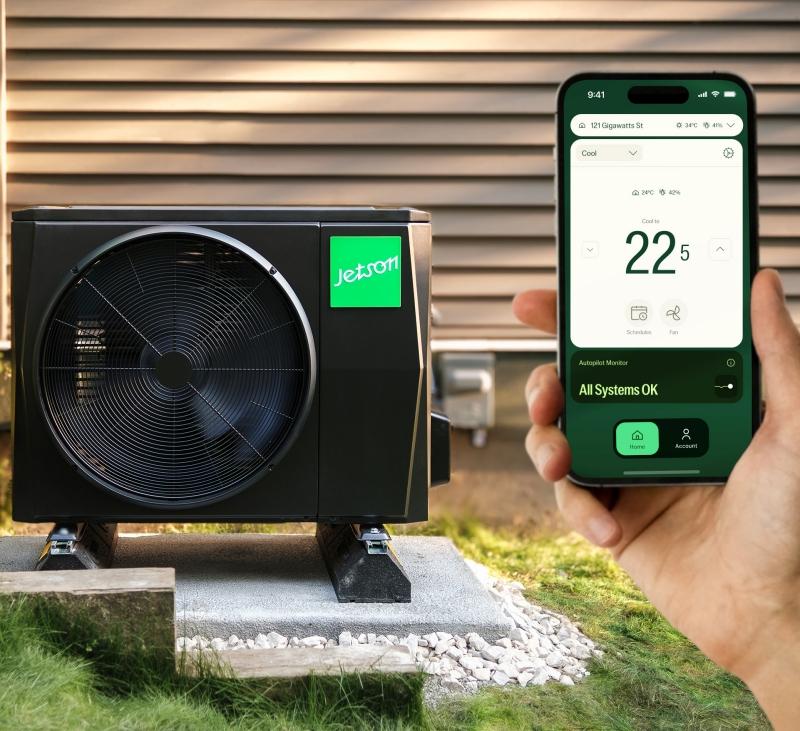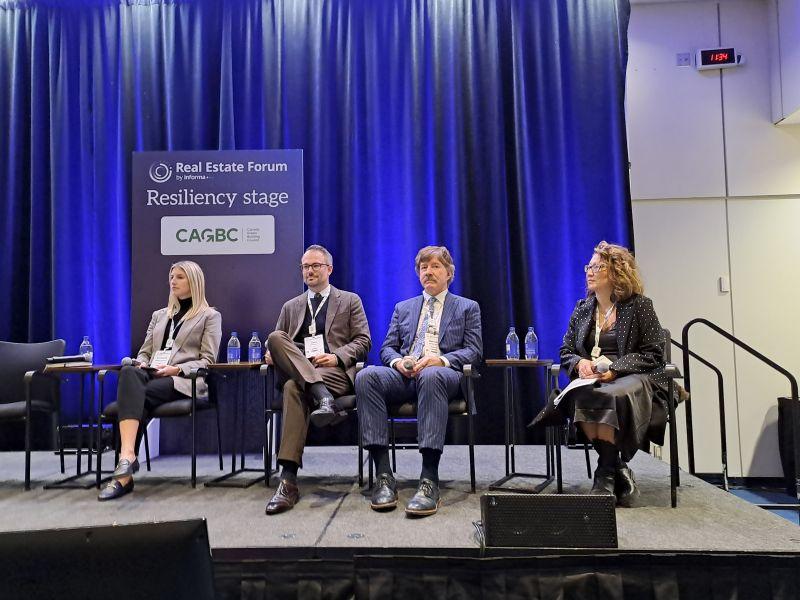
For some Canadian homeowners, the prospect of converting to a heat pump system can be daunting: How much does it cost? Do they really work?
These are some of the key questions being asked, but one Vancouver-based company says it has answers. Cheekily named Jetson is now offering an integrated system it promises will save money and work in our cold climate.
“Only 10 to 15 per cent of homes have a heat pump, versus 70 plus per cent that have a fossil fuel furnace and so we started Jetson to try and move the needle: How do we get the 100 million homes today that should be converted to heat pumps?” Stephen Lake, co-founder and CEO of Jetson, told Sustainable Biz Canada in an interview.
At the heart of the product is the company’s ability to install a system in one day, at a lower price compared to other offerings he claims.
While a typical system can cost around $15,000 per install, once you add up the costs of hooking up two separate units: furnace and air conditioner, and by employing multiple contractors, the price can grow as high as an average of $30,000, Lake said.
One-day installation
But Jetson offers a different method with its Jetson Air product.
“You go online; you enter your address. We look up a number of details about your home. We’re looking up the square footage, the year your home was built, the footprint, the way it’s facing, the location; all of these things, to build an automated model and the heating, cooling needs for it, and then automatically designing a heat-pump system for your home,” Lake said.
The process can be done without having a contractor visit to make an assessment. Once a deposit is paid, the team shows up on the day of the installation.
“They’re removing the old furnace, replacing it with a central air handler that will heat and cool the entire home; placing the outdoor heat pump unit, running the new electrical circuits, connecting the two together, and essentially by end of the day, they’re showing you how to use the Jetson app and the new smart thermostat, and you’re set up with an all-electric system,” Lake said.
This can result in 30 to 50 per cent savings compared traditional installations, he said, and with rebates, some customers may pay as little as nothing or up to $5,000 after government incentives.
Currently, the company operates in B.C., Colorado and Massachusetts but it hopes to soon expand to more provinces and states. Customers typically save approximately 20 to 30 per cent on monthly energy costs, he added.
While he wouldn’t say exactly how many installations it has done, that number is to reach 1,000 by the end of 2025, according to Lake.
System relies heavily on software

The company was started after Lake sold his startup, now called North (previously Thalmic Labs), to Google in 2020. He quickly recognized the “huge climate opportunity that home heating/cooling presents,” and started Jetson.
“I think many homeowners may not realize that your home probably emits as much, if not more, carbon than the car in the driveway,” Lake said.
Unlike the current “dumb devices” most people have in their homes, Jetson’s system relies heavily on its software. “We’re taking the same approach that Tesla took to great success with EVs (electric vehicles) and vehicles, where we are using the power of modern software to create a product,” he said.
In addition to the pump, which connects to existing duct work, the company installs an air quality monitoring system in the main duct, and a home energy monitor, which provides more data points for the homeowner through the Jetson Home app.
“Not only are you studying your heating and cooling schedules or temperatures, but you also get insight into how your whole home is performing,” he said.
For example, one of the most common reasons for furnace inefficiency comes down to a simple fix.
“Contractors talk about 30 or 40 per cent of service calls ended up being the air filter. Our system actually detects as it’s getting dirty; we detect the fans working harder. We can alert you in the app and say, ‘Your air filters are ready to be changed, or your efficiency is down 10 per cent this month because you haven’t changed it yet.’”
The system also can help homeowners take advantage of time-of-use pricing and increase heat or coolness when prices are lower, he said.
Heat pumps 'almost like magic'
So, what makes heat pumps such a promising technology? Lake likens it to being “almost like magic.”
“Heat pumps don’t create heat by burning the fuel. It’s actually taking existing heat from the outside air and moving that heat to the inside of your home to heat it. Then it’s doing the opposite in the summer to cool your home,” Lake said.
Some systems can have an efficiency of 300 to 400 per cent, he said, which contrasts with a maximum 100 per cent rate for fossil fuel burning systems.
“It’s using heat that already exists in the air, so that’s why they’re so incredibly efficient.”
And the homeowner doesn’t have to worry about harmful byproducts from burning fuel, he said.
Cold weather performance
The technology has also had recent increases in efficiency with new cold climate performance upgrades.
“They actually do work down to minus 30 Celsius. They, in most Canadian provinces, are cost competitive with heating with gas, if not cheaper in some cases,” Lake said. He points to Norway where the majority of homes are heated by this technology.
While the future seems bright, there are some challenges on the horizon for companies such as Jetson.
The majority of HVAC contractors today are mainly trained in gas heating and “they just don’t necessarily have the knowledge and skill set for heat pumps, and so they’re often not recommending those to customers,” he said. “There’s a huge shortage in the labour market today.”
As well, governments are lagging in terms of offering incentives to switch.
“In British Columbia for example, the rebate programs in place are limited only to as they define middle- and lower-income households. In practice, the majority of single-family homes aren’t able to qualify for any incentive," he said.
"We do know from experience in many jurisdictions that these incentives absolutely drive behaviour.”










